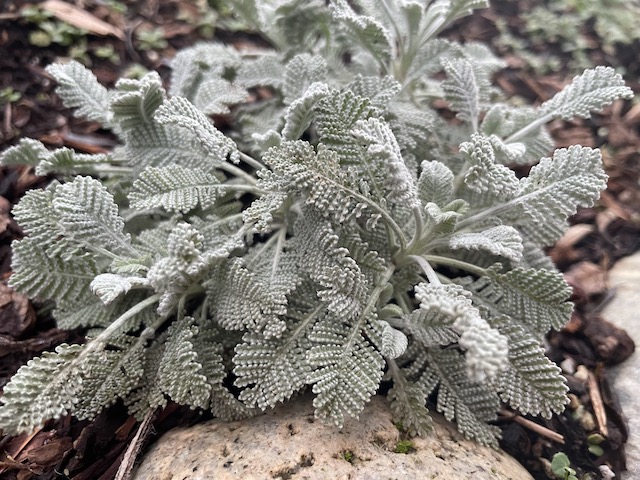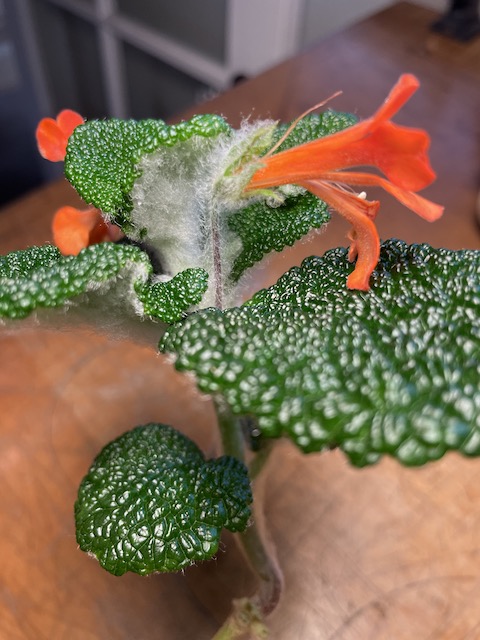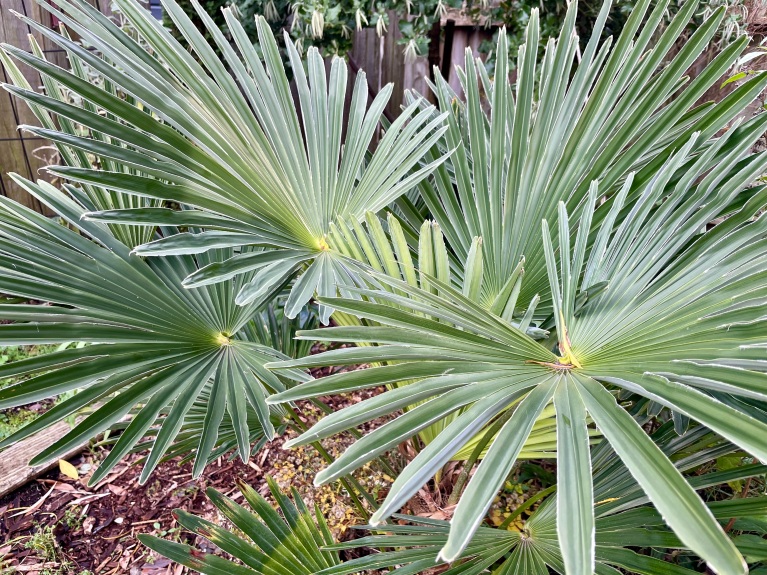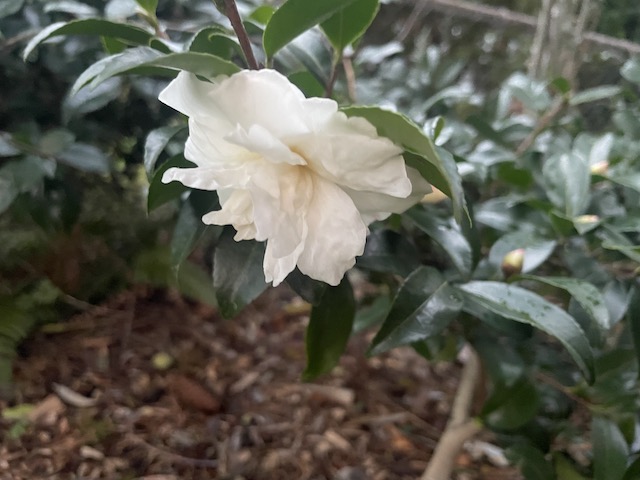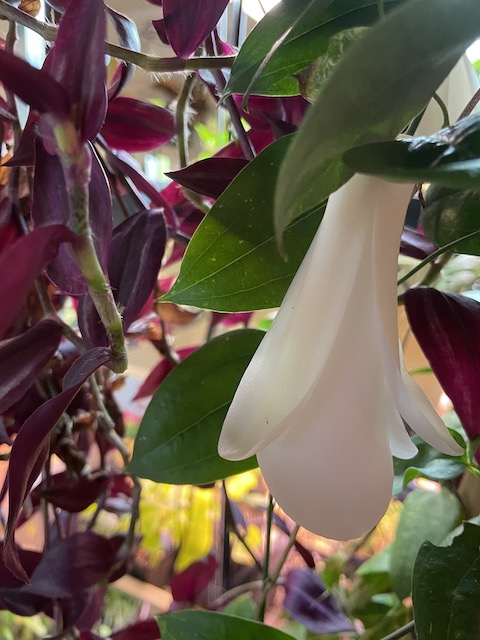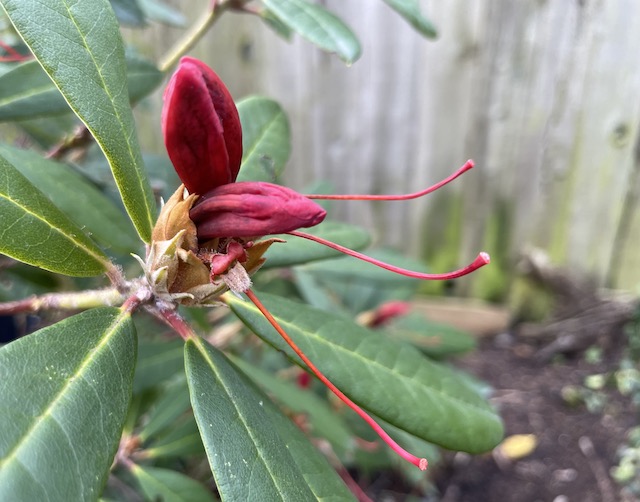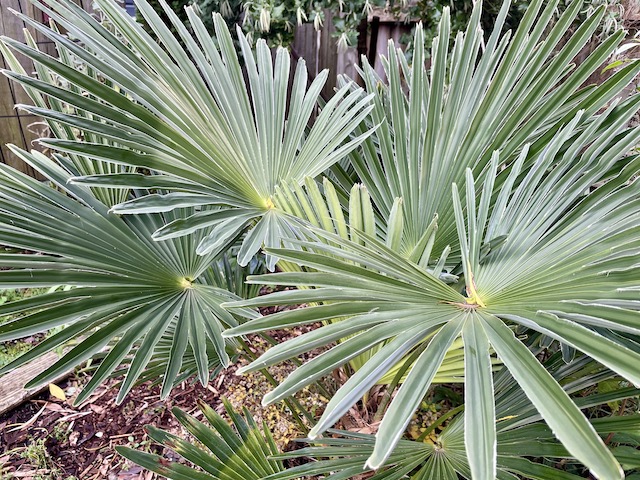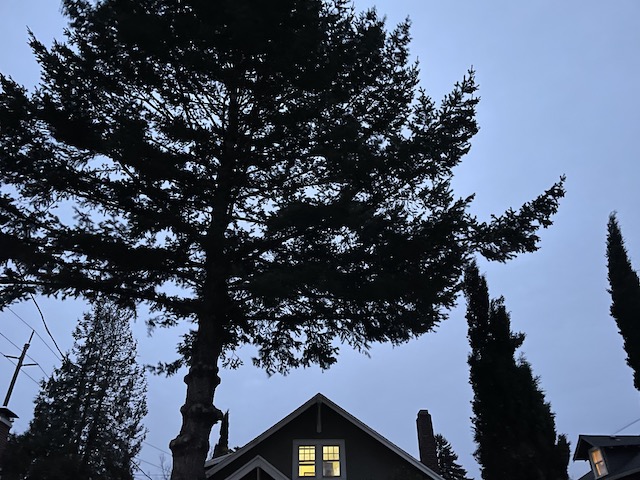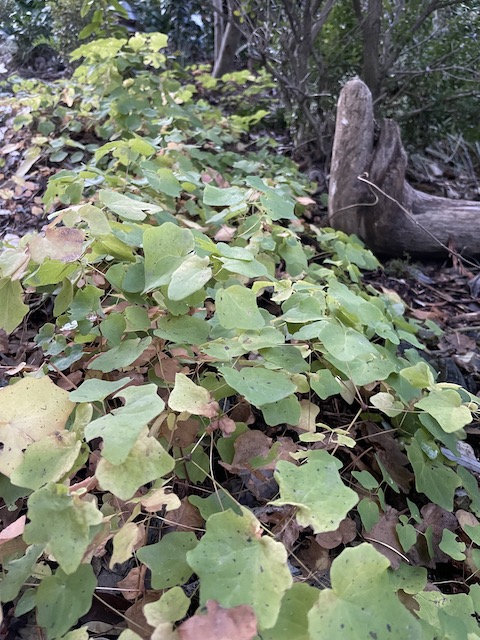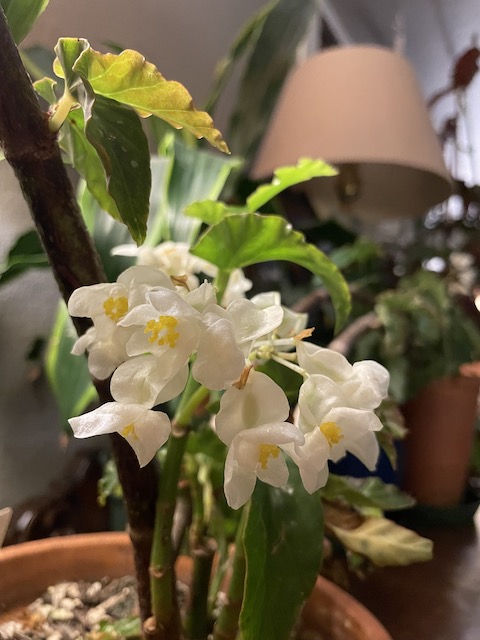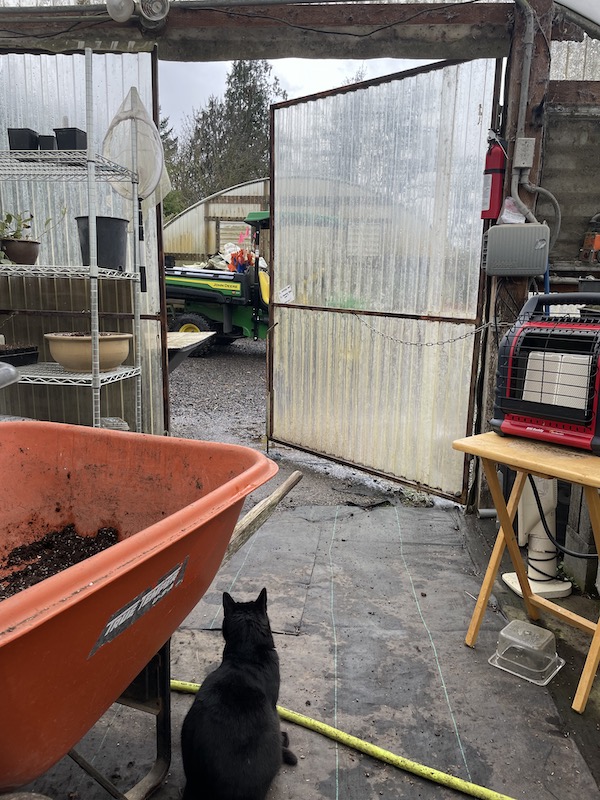One: Not much likely needs to be written about why anyone would love a Camellia sasanqua ‘Yuletide’ in winter. Thanks to my quick thinking last year after it bloomed, I pruned it again, and I’m glad that I did! The shape the two shrubs had was off, and heavy snow could have damaged them, but not now after some improved branching and balance. I just love those fragrant red blooms with their yellow stamens. This is one of those shrubs that always gives hope to those who get the winter doldrums. Spring is on its way. USDA zones 7a-10b.
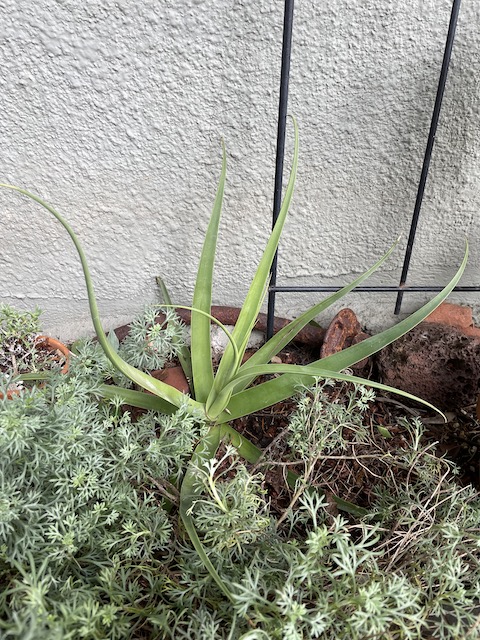
Two: While I love agaves, and find them to be otherworldly at times, I just don’t have the strength to containerize and move them about to keep them looking fresh. Yes, we have hardy ones here (if planted correctly with A LOT of sharp drainage) but I have not focussed on them as a focal point in my garden even though they are in A LOT of Mediterranean gardens. I think this is Agave bracteosa ‘Calamar’. USDA zones 7-11.
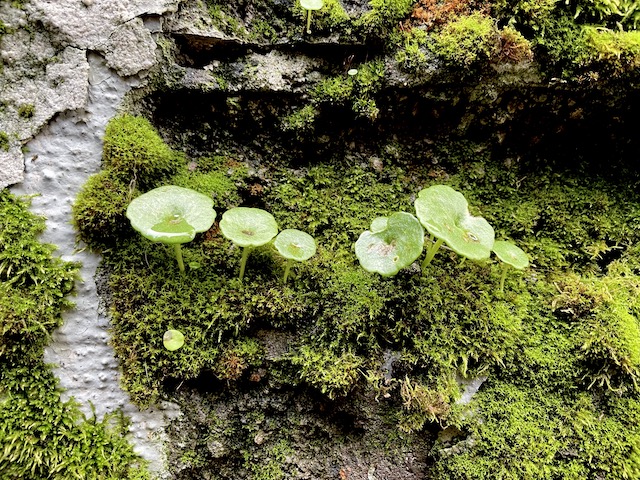
Three: This is one of those cottage garden classics from overseas in Europe that you frequently see poking out between stones in walls or stairways. It’s in the Crassulacaea family and has fleshy leaves with tall tapering spire-like blooms. The seeds that leak out of the dried capsules are teeny tiny, and dust like. Their minuscule size enables them to be carried on the wind, blown about, and they appear to germinate best when they land on horizontal or vertical patches of moss. Often found in Ireland, I like to believe this little weedy thing better connects me to my roots a bit, ones that were lopped off just a few generations ago. USDA zones 7a-10b.
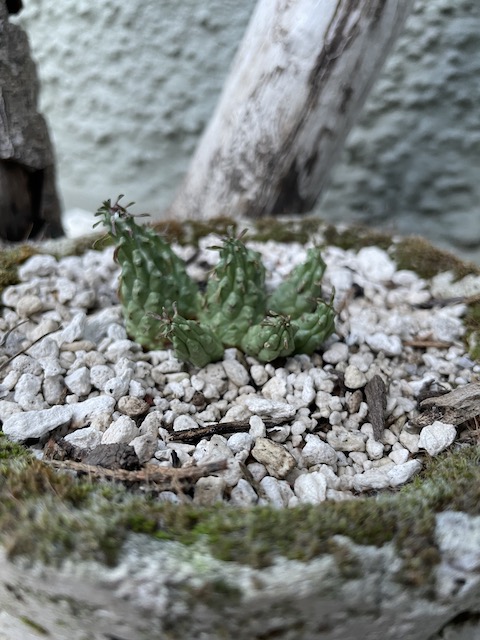
Four: One of the most wonderful things about last year was meeting some of the alpine plant folks. Moving more into that world makes a lot of sense to me, and it is something I avoided for many years. When the crevice garden was build at Cistus Nursery, I had important conversations with the builders—all talented horticulturists on their own, really a “dream team”—and it felt good. Like many of the things I’ve been doing during the last few years, it sutured an emotional wound. Kinda fun to tell new friends that if it hadn’t been for my poor health I would have met them up high in the mountains decades ago. While that vulnerability was painful at first, letting down my guard led to a warm welcome and I’m happily enfolded now, embraced.
What does this mean? It means that I need to grow more alpines and master techniques. Unfortunately, I don’t have a lot of spots in my garden to do this well yet, but I’m working on it. As of right now, I’ve only successfully been growing a few in containers, and this is my favorite one! Euphorbia clavariodes, from the Drakensberg Mountains. USDA zones 6-10.

Five: As always I have a porch filled with plant experiments setup in order to study just how cold hardy they are here in Portland. It’s not a bad thing to do if you have the time to move them in when it freezes—or if you don’t mind if you lose a few things. My projects include orchids, ferns, Hoyas and a few other epiphytic plants. My friend Carlos has encouraged me to mount more, and he’s right. I kind of lost my focus last year and still have a few great mounting projects to complete that I’m excited about for this year. If I begin them now, they’ll look fantastic in a few months. USDA zones 9-10.
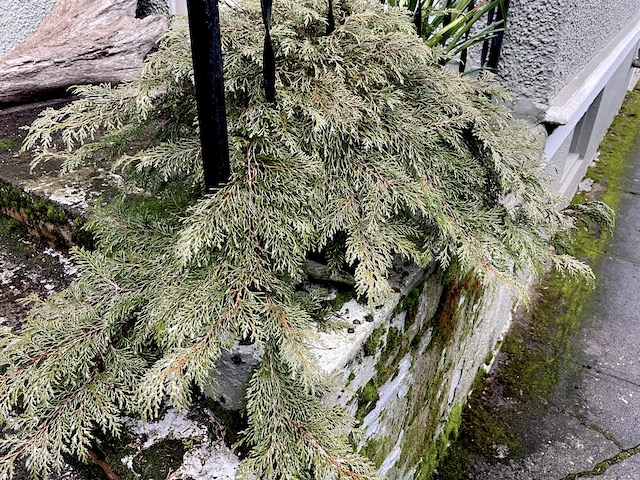
Six: If I could have a larger garden, I would have more conifers. I just cannot say how important they are as bones in the garden. While I understand some can fry here in the Willamette Valley during our hotter months, I do not mind watering them. (Yes, not all of the PNW is a lush forest nor should it be.) This is not a popular opinion, I know, but there is just something comforting to me about them, and that’s likely my knowing how much they thrive here during the other three seasons. As a good designer would say, a good design, and even a great design, will give you a sense of place. No, this is not a native conifer, I know, but it is a beautiful one, that is easy in a container, can take some tough conditions, and can work well with other plantings, and yes, it gives off that lush woodsy feel. Usually it bronzes up a bit in winter. This year though, well, it hasn’t much. USDA zones 3a-8b.
Seven: When I planted this Tanacetum densum ssp. amani I worried it would look tattered along its edges during the colder months. Well, here it is after a cold spell and during the month of January in a protected but exposed spot in the most xeric spot in my garden. Those feathery leaves, combined with its tenacity, remind me of yarrow, but this plant is so much prettier and so much more lush. It will thrive in warm, sunny spots in the garden. Later this year I’ll enjoy its yellow blooms. USDA zones 4a-11.

Eight: This is still a funny shrub to me. It’s in the wrong spot in my garden since I don’t have a lot of pink in the front garden, but hey, it won’t matter what’s blooming out there in the wintertime. (My arbitrary rules only apply for 8 months of the year. January is not one of those months. Hahaha.) I wanted folks walking by to see this beauty and ask me more about manzanitas, because you know, I might happen to work at a place that’s well known for our selection of them.
Part of me kind of wishes my entire front garden was filled with them, but I like other plants too much, so I only have this orphan from work. The funny part though is that Sean gifted me with several Arctos over the years that I promptly killed since I depended heavily on a sprinkler back then and drowned them.
I’m so glad those days of wasting so much water are over. USDA zones 7-9.

Nine: A beautiful and unusual New Zealand plant for the fun folks out there. Pittosporum divaricatum is the perfect plant for a garden inspired by Dr. Seuss or Studio Ghibli. (Doesn’t it look a bit like a giant soot sprite (Susuwatari) from the films My Neighbor Totoro and Spirited Away?)
Okay, maybe the playful description is not for everyone, it can be classy too. I see it as a plant that both stands out in the front garden, and yet it blends in too. I love how it looks great year round. It may have tipped over a bit last year when it was top heavy after some snow and ice, but after it had a little posture correction, it is doing even better. USDA zones 8a-10b.
Ten: Not a hardy plant, but I’m trying to add one greenhouse or houseplant to each of these Top 10 posts. Another of my Brazilian Sinningia plants, I just love this one and its incredible leaves. Named “bullata” due to the upper surface of the leaves, which are bullate, the fuzz beneath them is a bit like something you’d see in a sci-fi movie like that classic Invasion of the Body Snatchers. Plants do so many incredible things and this thick wool-like fur keeps the pests away, so why not admire it for being both assertive in its survival techniques, as well as looking all gussied up. USDA zone 10.


